I writing this post for one of my best friends who is very health conscious and always trying to eat the “right” way. His wife texted me a picture of this ice cream last night saying he purchased it because it was “low in carbs and good on the belly.” I immediately looked up the ingredients and told her to return it. This product is nothing more than a chemical concoction. As you will see from the following ingredient breakdown, calling this product ice-cream is certainly a stretch. I figure if Breyers was able to trick my friend, they are probably tricking many others. Please don’t be fooled. This product is a great example of why you should always read your labels and not go by what the front of the package claims. Here is what is really in Carb Smart Vanilla Ice-Cream (ingredients in red are at-risk for being GMO):
SKIM MILK, WATER, CREAM, SORBITOL, POLYDEXTROSE, WHEY, CONTAINS 2% OR LESS OF EACH OF THE FOLLOWING: GLYCERIN, NATURAL FLAVOR, PROPYLENE GLYCOL MONOESTERS, CELLULOSE GEL, MONO AND DIGLYCERIDES, CELLULOSE GUM, GUAR GUM, CAROB BEAN GUM, ACESULFAME POTASSIUM, SUCRALOSE (SPLENDA (R) BRAND), CARRAGEENAN, SUGAR. Ingredients are current as of 3/1/13.
Ingredient Breakdown
Sorbital: Sorbitol is a sugar alcohol that is often used to sweeten processed foods. This artificial sweetener can cause severe bowel problems, including diarrhea, pain and extreme weight loss.
Polydextrose: Polydextrose is a non-digestible 1 kcal/g polysaccharide used primarily as a sugar replacer and dietary fiber in foods. At typical use levels, polydextrose provides physiological effects similar to those of other dietary fibers. However, excessive consumption of non-digestible carbohydrates can lead to gastrointestinal distress.
Whey: Whey protein comes from cow’s milk. The process of cow’s milk being turned into cheese creates whey protein as a byproduct. Whey protein is a complete and high quality protein, with all the essential amino acids. Whey protein is a natural food substance, but is not 100 percent risk-free. Excessive consumption may contribute to kidney damage.
Natural Flavor: Natural Flavors as defined by the USDA are, “the essential oil, oleoresin, essence or extractive, protein hydrolystate, distillate, or any product of roasting, heating or enzymolysis, which contains the flavoring constituents derived from a spice, fruit or fruit juice, vegetable or vegetable juice, edible yeast, herb, bark, bud, root, leaf of similar plant material, meat, seafood, poultry, eggs, dairy products, or fermentation products thereof, whose significant function in food is flavoring rather than nutritional.”
Often times, “castoreum,” which is emitted from the castor sacs within a beaver’s anus is used as “natural flavor.” For a beaver, this slimy brown substance is used to mark its territory, but for us humans, it’s used as an additive that is often labeled as “natural flavoring” in the foods we eat – vanilla, strawberry and raspberry probably being the most common. Instead of smelling horrible, like most people would expect from an anally produced secretion, it has a pleasant scent, which supposedly makes it a perfect candidate for food flavoring and other products.
Propylene Glycol Monoesters: Propylene glycol monoester is an emulsifier. It is used in cakes, ice creams, pastries, cookies, dips, jams, spreads and many other processed food items. Propylene glycol monoesters are hydrolyzed to fatty acids and propylene glycol, which are normally present in the human body and are easily metabolized. Propylene glycol monoesters can cause mild irritation of the eyes or skin, similar to an allergy, on prolonged contact. It is non-toxic in small doses. It is high in cholesterol. In lethal or near lethal doses, (6 gm per kg or more), propylene glycol mono ester of stearic acid is known to cause kidney damage in several species. No specific data or information on harmful effects is available, however it is advisable to avoid consumption in large doses.
Mono and Diglycerides: Monoglycerides and diglycerides are food additives commonly used to combine ingredients containing fats with those containing water, two types of ingredients that don’t ordinarily combine well. Food manufacturers typically use them to extend a product’s shelf life. Many different chemicals may be used in the process of manufacturing mono- and diglycerides that are still present in the final product. Among the most prevalent of these is hardened palm oil, or palm oil exposed to hydrogen and high temperatures, a process that forms trans fats. Other possible compounds added in the making of mono- and diglycerides include nickel, tartaric acid, synthetic lactic acid, ricinus fatty acids and sodium hydroxide, each of which may pose health risks of its own. Unfortunately, insufficient study has been done on the potential health dangers of these compounds.
Cellulose Gum: Cellulose gum is the common name for carboxymethylcellulose, or CMC. It comes from the cell walls of woody plants, most often trees and cotton. Cellulose gum improves texture, so it is a common ingredient in ice cream and frosting. Both the U.S. Food and Drug Administration and the Center for Science in the Public Interest consider this plant-derived product as generally safe for human consumption, with some minor cautions. Your body is not able to break down cellulose gum, so it simply passes through your digestive tract and you do not absorb it into your bloodstream. The U.S. Food and Drug Administration states that cellulose gum appears to have no effect on humans, except that the dietary bulk may fill you up and thus decrease the nutritive value of your diet. Nutrition labels for products containing cellulose gum can be misleading because products that contain cellulose gum sometimes include it in the dietary fiber count even though the body doesn’t absorb it. The FDA also cautions that the consumption of large quantities of cellulose gum may have a laxative effect.
Guar Gum: Guar gum is processed from guar seed extract. It is a thickening agent that is often found in gluten-free foods. Guar gum in low amounts has a minimal effect on the body. Larger doses of guar gum have potentially hazardous side effects. Guar gum is an extremely viscous thickening agent that has the potential to expand up to 20 times its original size. Guar gum is often marketed as a weight loss additive since it has the potential to minimize appetitive by creating a feeling of fullness. However, the possibility that guar gum could expand and completely block your gastrointestinal tract. Diets that utilize guar gum as the primary fiber source might run an increased risk of colon cancer. If you have any history of colon cancer in your family, you should be cautious when consuming large amounts of guar gum.
Carrageenan: Carrageenan is a common food additive that is extracted from a red seaweed, Chondrus crispus. It is a polysaccharide derived from red seaweed and it has molecular qualities similar to plastic. Carrageenan, which has no nutritional value, is used as a thickener and emulsifier to improve the texture of ice cream, yogurt, cottage cheese, soy milk and other processed foods. It is also used in toothpaste, beer, and gummy/jelly based products. All forms of carrageenan are capable of causing inflammation, specifically gastrointestinal inflammation… chronic inflammation is a root cause of many serious diseases including heart disease, Alzheimer’s and Parkinson’s diseases, and cancer.
Sugar: Cancer cells need sugar to thrive. When you consume sugar-laden foods, your pancreas’ beta cells produce insulin. By consuming sugar excessively, an overproduction of insulin may occur and you may become immune to its effects. Reducing sugar intake and normalizing your insulin levels can lower your risk of cancer.
Acesulfame Potassium: Acesulfame-K is a potassium salt containing methylene chloride, a known carcinogen. It is approved by the FDA, but there are several potential problems correlated with consumption of this food additive. Even though there are many studies that attest its safety, acesulfame potassium is still suspected of causing benign thyroid tumors. In rats, the development of such tumors took only 3 months, a period in which the concentration of this additive in the consumed food was between 1 and 5 percent. This is a very short period of time, so the substance is believed to have significant carcinogenic properties. Methylene chloride, a solvent used in the manufacture of acesulfame potassium, is the substance that may give the food additive its potential carcinogenic characteristics.
Sucralose: Sucralose is a synthetic additive created by chlorinating sugar. Manufacturers say the chlorine in sucralose is no different from that in table salt. However, the chemical structure of the chlorine in sucralose is almost the same as that in the now-banned pesticide DDT. Research has shown sucralose can cause shrinking of the thymus gland, an important immune system regulator, and liver and kidney dysfunction. A recent study by Duke University found sucralose reduces healthy intestinal bacteria, which are needed for proper digestion and can impact the effectiveness of prescription and other drugs.
“Avoid food products containing ingredients that are A) Unfamiliar, B) Unpronounceable, C) More than five in number or that include D) High-Fructose Corn Syrup. None of these characteristics, not even the last one, is necessarily harmful in and of itself, but all of them are reliable markers for foods that have been highly processed to the point where they may no longer be what they purport to be. They have crossed over from foods to food products.” – Michael Pollan
Want a quick, natural alternative? Try my one-ingredient, dairy-free banana ice-cream. You can find the recipe here.
To receive daily health tips and gluten-free, grain-free, dairy-free and sugar-free meal/snack ideas, like us at www.facebook.com/wholefoodrealfood.
“When you know better, you do better.”
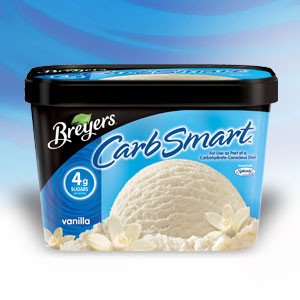
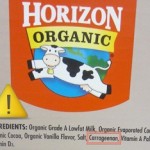
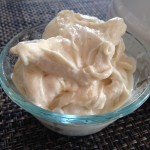
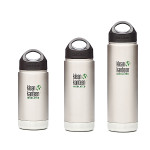
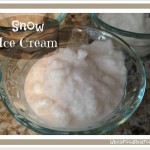
Oh dear, you really knocked this one out of the park! You had me at “anally produced secretions.”
Pingback: Snow Ice Cream | Whole Food. Real Food. Good Food.
I tried this ice cream on 2 occasions and it made me ill both times. If you look up what some of the ingredients are and their side effects, I think you will be amazed. Polydextrose and sorbitol to start with…this should be taken off the market. I am disappointed in Breyer’s.
I had some of this stuff yesterday and really had awful stomach pain, gas and diarrhea. Threw the rest in the trash. I will stick to small portions of regular ice cream after this!
Ditto… I wish I read this before eating it. dang, this stuff should be banned…
Hey, I wonder if Hillary eats this stuff? Explains much!
We’ve eaten this off and on for over 3 months and, fortunately, we did not experience any adverse symptoms. But appreciate bringing attention to the ingredients. Hate having to make our own ice cream, but realize I better try…Mason Jar Ice Cream here I come.